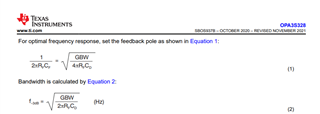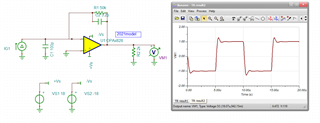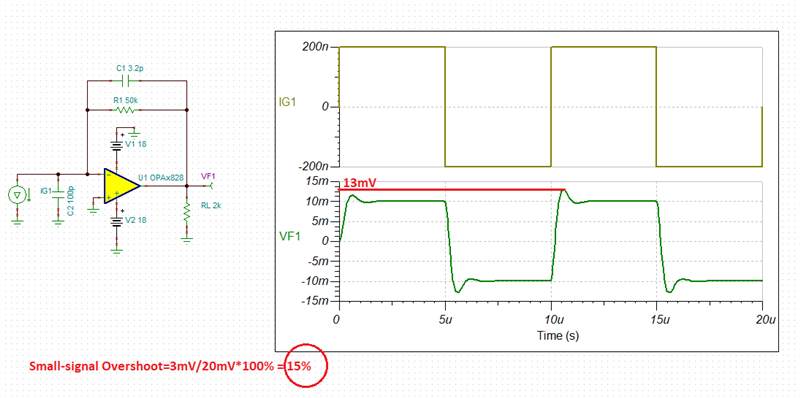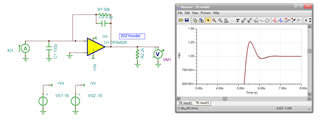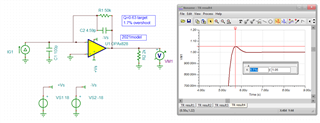Other Parts Discussed in Thread: OPA3S328
So I had gotten involved in what is out there in compensating a transimpedance design, There is a newer one I will mention at the end that seems very accurate, wondering what equation sits behind that - but first
This app note repeats a very common (ancient) approach but then reports a BW that is quite incorrect, https://www.ti.com/lit/an/sboa354/sboa354.pdf
Here, the OPA828 (45MHz GBP) is used with a 100pF detector and 50kohm gain to target about a 1.1MHz small signal BW.
Here I stepped through some testing - this app note uses the old idea of putting the feedback pole at the Fo frequency, that will in fact give you a close loop Q of 1 extending the BW and peaking about 1.25dB. Not really very desireable step response and easy to fix.
OPA828 model tests and Zt testing from SBOA354 document TI only.docx
The improved Cf solution we have been using in high speed TI amps for many years is in here,
4784.Transimpedance design flow using high speed op amps.pptx
The ADI photodiode design wizards seems to be doing this correctly,following what I had in the earlier articles I wrote on this topic.
A more recent tool was developed by Hasan and placed into this e2e - it seems to match what I was doing, but is it perhaps doing some else like Jerry Graemes slightly more accurate equation in the word file here?
I would suggest you make the excel tool in this link more findable and either get rid of or fix the misleading info in SBOA354


